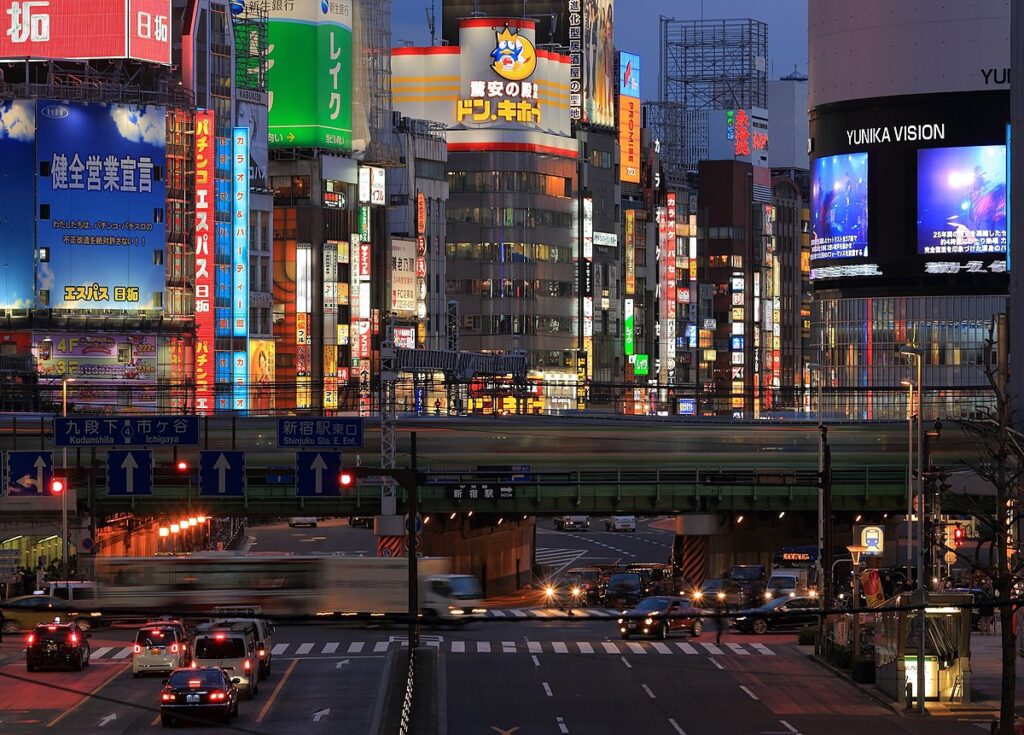-

Tokyo Metropolitan Government Building (Shinjuku Ward, Tokyo)
Overview (History, Features, and Attractions) Tokyo Metropolitan Government Building (commonly known as Tocho) is a large government building that houses Tokyo's administrative agencies and is a symbol of Shinjuku Subcenter. Designed by the master of modern architecture, Kenzo Tange, it was completed in the early 1990s. Its two main towers (the First Main Building and the Second Main Building) are approximately 243 meters high. -

Shirahone Hot Springs (Matsumoto City, Nagano Prefecture)
Overview (History, Features, and Attractions) Shirahone Onsen is a historic hot spring resort located in Matsumoto City, Nagano Prefecture (formerly the Azumi region). The hot spring's name comes from a legend that refers to "white bones," and it has long been a popular hot spring resort. Its most distinctive feature is its milky white to pale bluish-white color... -

Kuromon Market (Chuo Ward, Osaka City, Osaka Prefecture)
Overview (History, Features, and Attractions) Kuromon Market is a food shopping district in Osaka's Chuo Ward, affectionately known as "Osaka's Kitchen." Originating as a commercial district dating back to the Edo period, it is a lively market lined with fresh fish, meat, produce, prepared foods, sushi restaurants, and small-plate restaurants. Local... -

Minamiza Theatre (Higashiyama Ward, Kyoto City, Kyoto Prefecture)
Overview (History, Features, and Appeal) Minamiza is one of Japan's leading kabuki theaters, located near Shijo Ohashi Bridge in Higashiyama Ward, Kyoto City, and is a central presence in Kyoto's traditional performing arts. Its origins date back to the Edo period, and it has continued to host kabuki performances to this day, undergoing repeated renovations and restorations over the years... -

Sarusawa Pond (Nara City, Nara Prefecture)
Overview (History, Features, and Attractions) Sarusawa Pond is a circular pond located in the center of Nara City, adjacent to Kofuku-ji Temple and Nara Park. It has long been a beloved landmark shaping the cityscape, and is particularly famous for the "mirror" view of Kofuku-ji Temple's five-story pagoda reflected in the pond. -

Nagaragawa River Cormorant Fishing (Gifu City, Gifu Prefecture)
Overview (History, Features, and Attractions) Nagara River Cormorant Fishing is a demonstration of the traditional fishing method, "Ukai," held every spring through autumn on the Nagara River, which flows through Gifu City. Cormorant fishermen use cormorants to swim around the river's surface at night, catching fish that gather around the lit bonfires (bonfires on the cormorant fishing boats). Nagara... -

Ojirogawa Valley (Hokuto City, Yamanashi Prefecture)
Overview (History, Features, and Attractions) The Ojira River Valley is a natural spot in Hokuto City (Hakushu region) of Yamanashi Prefecture, known for its clear streams and valley scenery. Its source is the abundant meltwater from the Southern Alps (Akaishi to Takamine range), creating a crystal-clear, emerald-green stream and eroded pools... -

Himi Fishing Port (Himi City, Toyama Prefecture)
Overview (History, Features, and Attractions) Himi Fishing Port (Himi City, Toyama Prefecture) is a historic fishing port facing Toyama Bay (Takaoka-Himi Bay area), known nationwide for its "Himi winter yellowtail." Coastal fishing and fixed-net fishing have long been thriving here, and the area surrounding the port boasts a fish market, a direct sales store for fresh fish, and seafood shops. -

Nakanoshima Park (Kita Ward, Osaka City, Osaka Prefecture)
Nakanoshima Park (Kita-ku, Osaka City, Osaka Prefecture) Overview (History, Features, and Attractions) Nakanoshima Park is an urban park that stretches across Nakanoshima (the island between the Dojima River and the Tosabori River in Osaka City). Development began during the Meiji period, and the park has developed into an area that brings together historical buildings and modern cultural facilities. Within the park... -

Iwashimizu Hachiman Shrine (Yawata City, Kyoto Prefecture)
Overview (History, Features, and Attractions) Iwashimizu Hachiman Shrine is a historic Hachiman shrine located on top of Mount Otokoyama in Yawata City, Kyoto Prefecture. Its founding is said to date back to the mid-Heian period (9th century), and it enshrines Hachiman (a war god and guardian deity dedicated to Emperor Ojin) as a guardian deity of the Imperial family and the nation.




